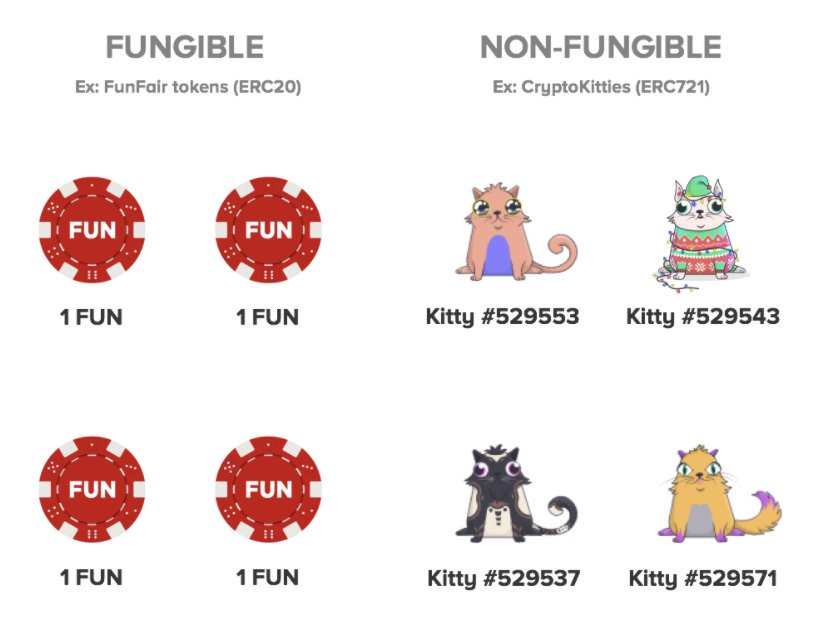Non-fungible token - Ownership of something unique, which can not be interchanged or copied

A non-fungible token (NFT) is a blockchain based digital asset proof mechanism, which is very popular at present.
NFT represents ownership of something unique, which can not be interchanged or copied. Each is different therefore can be valued differently.
As an example, cryptocurrencies e.g. Bitcoin or MANA, are fungible, in that the more Bitcoin you own the more value you hold.
In contrast, non-fungible tokens are each unique in nature, therefore 1 NFT can be more valuable than another and the volume of NFT’s you hold may have little bearing on the value you hold.
Generally, the more rare and scarce the NFT, the more value it may have.
Why are NFT technically problematic
This article discusses some technical details, suggesting that is is technically flawed and may not be appropriate as an asset.
The certificate that is kept in the blockchain is not the picture but it's a URL that points to some JSON. The JSON contains the url that points to the asset. In short, you own an url, not an NFT-verified asset.
However, you don't own any of those two urls. They're owned by external parties. So you paid for a link in a domain that you don't own, and you can't control.
Either of parties stops owning the domain, your NFT is gone.
Fungible Vs Non-Fungible Tokens
There are some major differences between Fungible and Non Fungible tokens. These can be listed as below:
Interchangeable: The Fungible tokens can be exchanged to the other token of the same type whereas the Non Fungible tokens cannot be replaced.
Uniform: All the Fungible tokens are identical in specification. However, each Non Fungible token is unique and different.
Divisible: The Fungible tokens are divisible into smaller units whereas Non Fungible tokens cannot be divided.
ERC standard: The Fungible tokens are ERC-20 standard whereas the Non Fungible tokens are ERC-721 standard.
NFT Pros and Cons
- Pros
- In games, sports, arts, and technology, they could unlock new revenue sources.
- For the very first time, NFTs could introduce millions of individuals to cryptocurrencies.
- They can change our ownership behaviors and make it possible to own an asset in the real world that is thousands of miles away.
- The ERC-721 standard can be a way to tokenize any major asset.
- Cons
- It can be tricky and time-consuming to create decentralized applications for non-fungible tokens.
- A lot more simplification is needed to make it easy for individuals who know nothing about blockchain to use NFTs.
- In the hope of selling it on for a profit, players buy an asset, but if the market crashes, they will make a nasty loss.
- ERC-721 is still relatively new to the token norm.
- Up to a certain point, fungible tokens are divisible. ERC-721 clearly cannot be broken and must be purchased or sold in its entirety.
